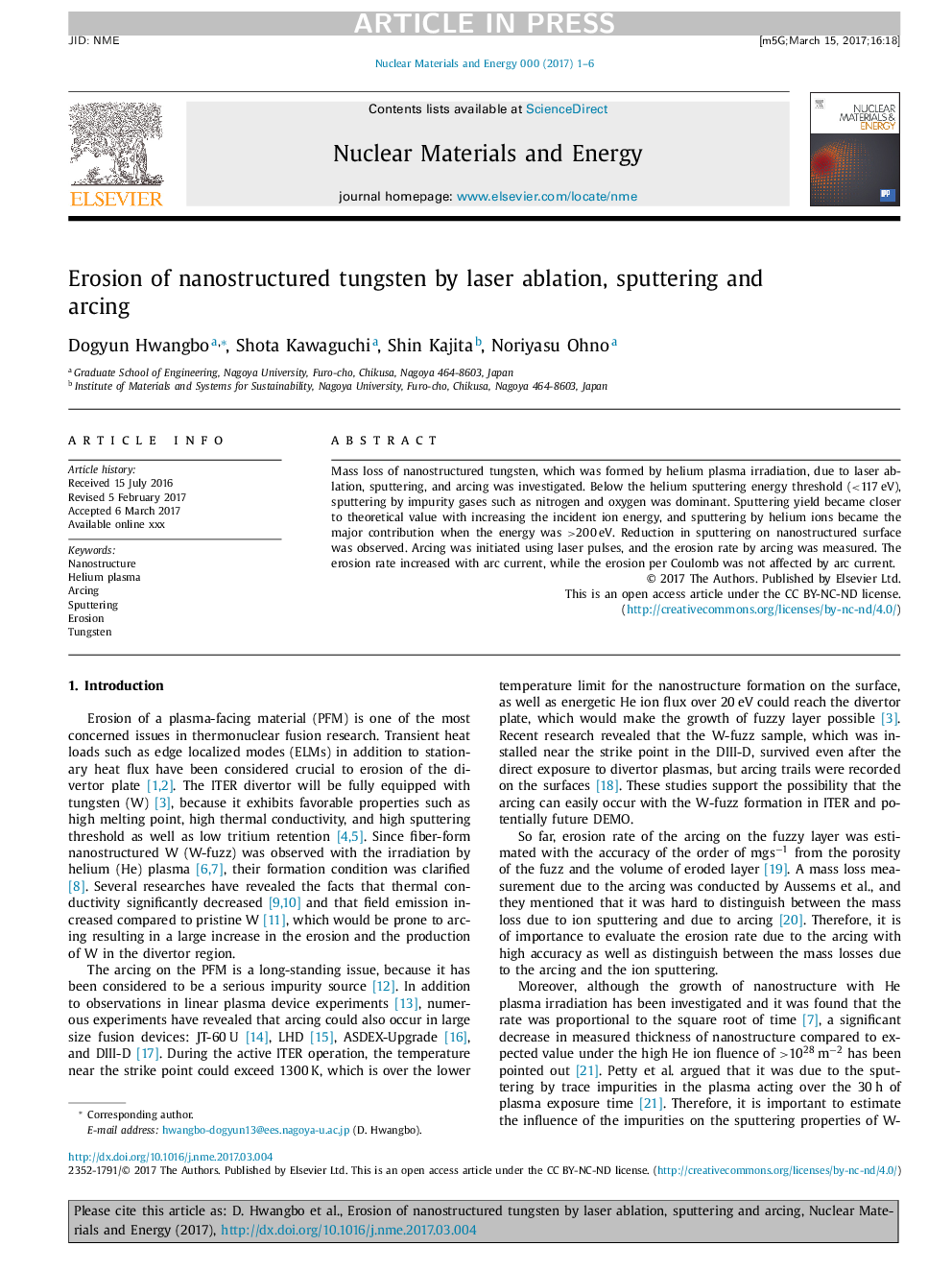| Article ID | Journal | Published Year | Pages | File Type |
|---|---|---|---|---|
| 7987496 | Nuclear Materials and Energy | 2017 | 6 Pages |
Abstract
Mass loss of nanostructured tungsten, which was formed by helium plasma irradiation, due to laser ablation, sputtering, and arcing was investigated. Below the helium sputtering energy threshold (<117Â eV), sputtering by impurity gases such as nitrogen and oxygen was dominant. Sputtering yield became closer to theoretical value with increasing the incident ion energy, and sputtering by helium ions became the major contribution when the energy was >200Â eV. Reduction in sputtering on nanostructured surface was observed. Arcing was initiated using laser pulses, and the erosion rate by arcing was measured. The erosion rate increased with arc current, while the erosion per Coulomb was not affected by arc current.
Related Topics
Physical Sciences and Engineering
Energy
Nuclear Energy and Engineering
Authors
Dogyun Hwangbo, Shota Kawaguchi, Shin Kajita, Noriyasu Ohno,
